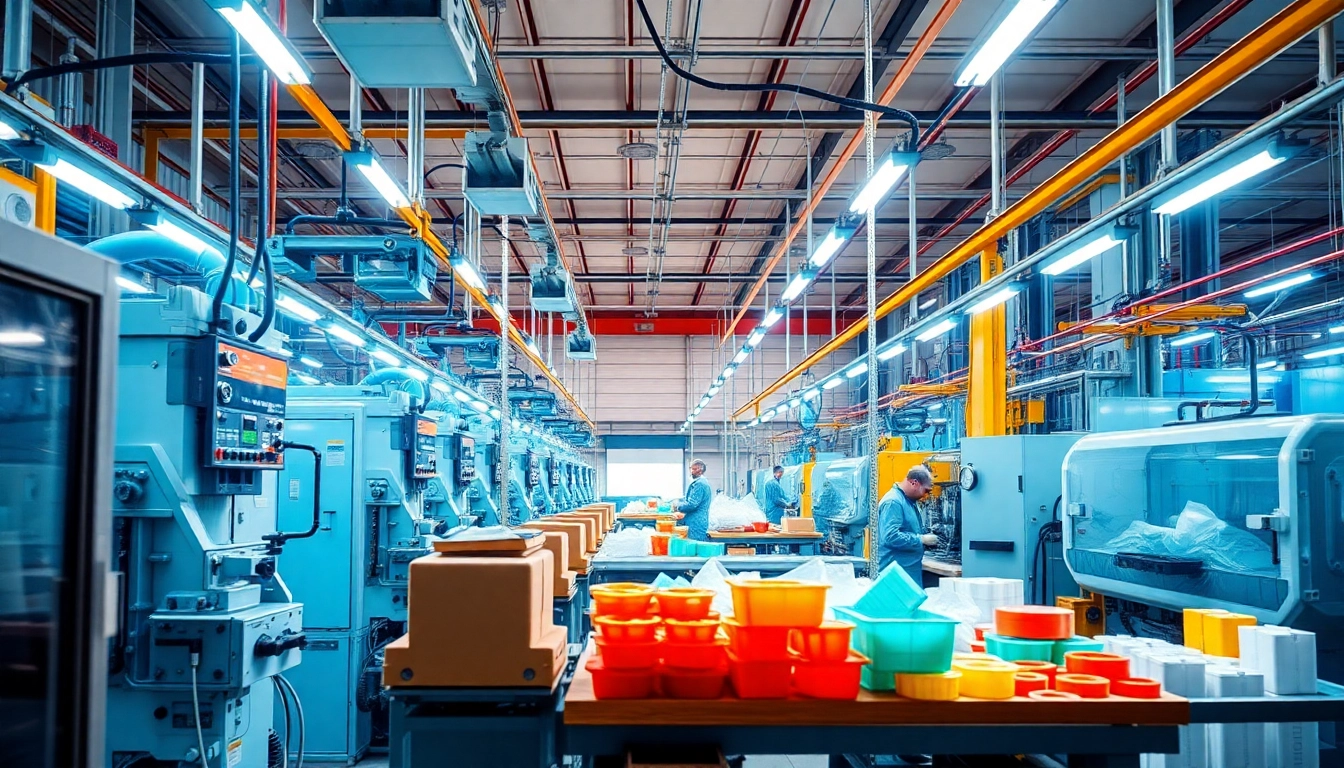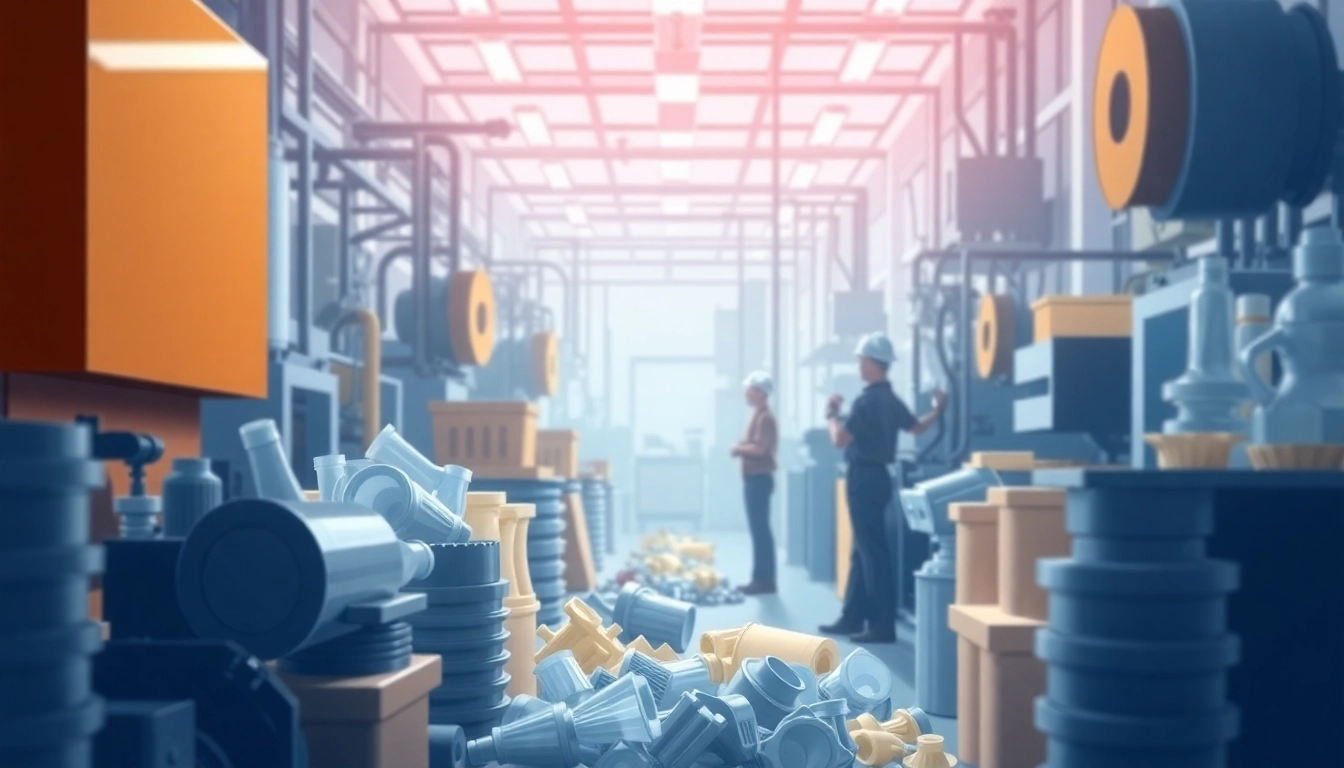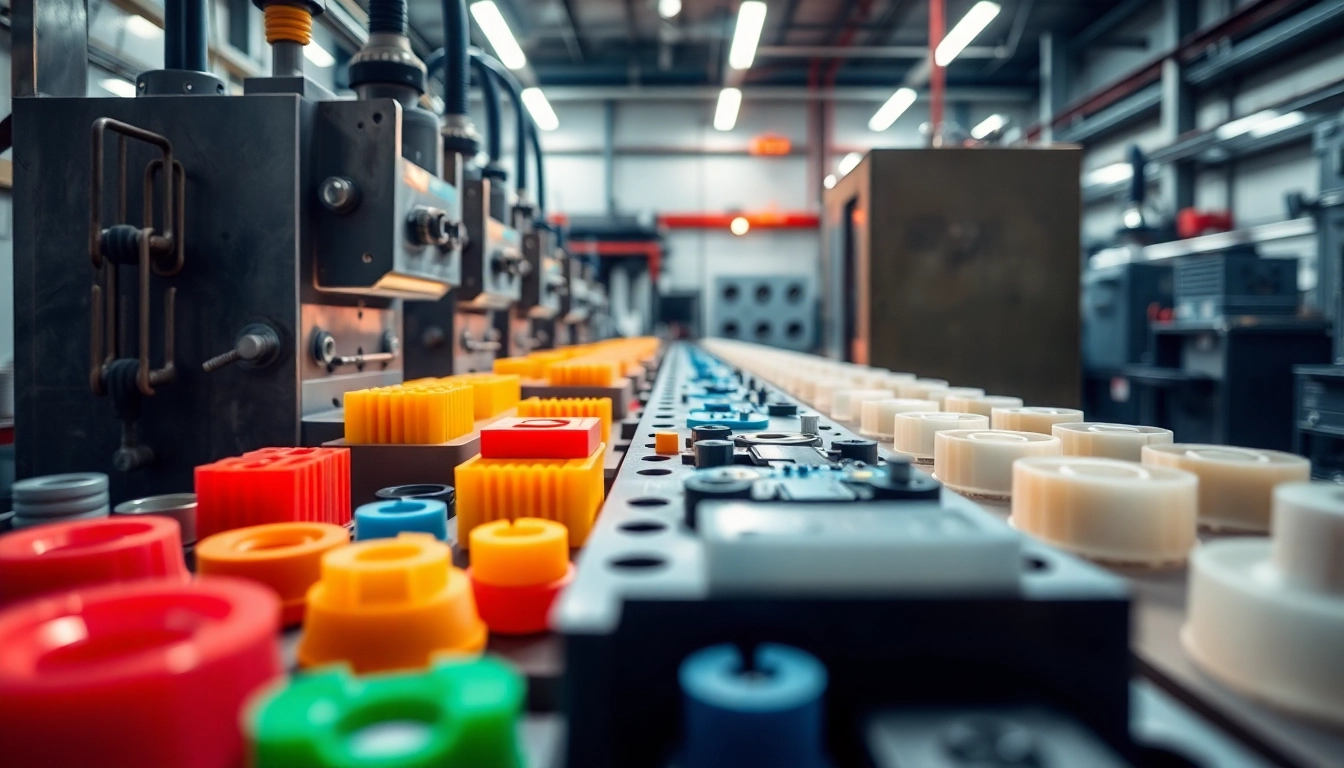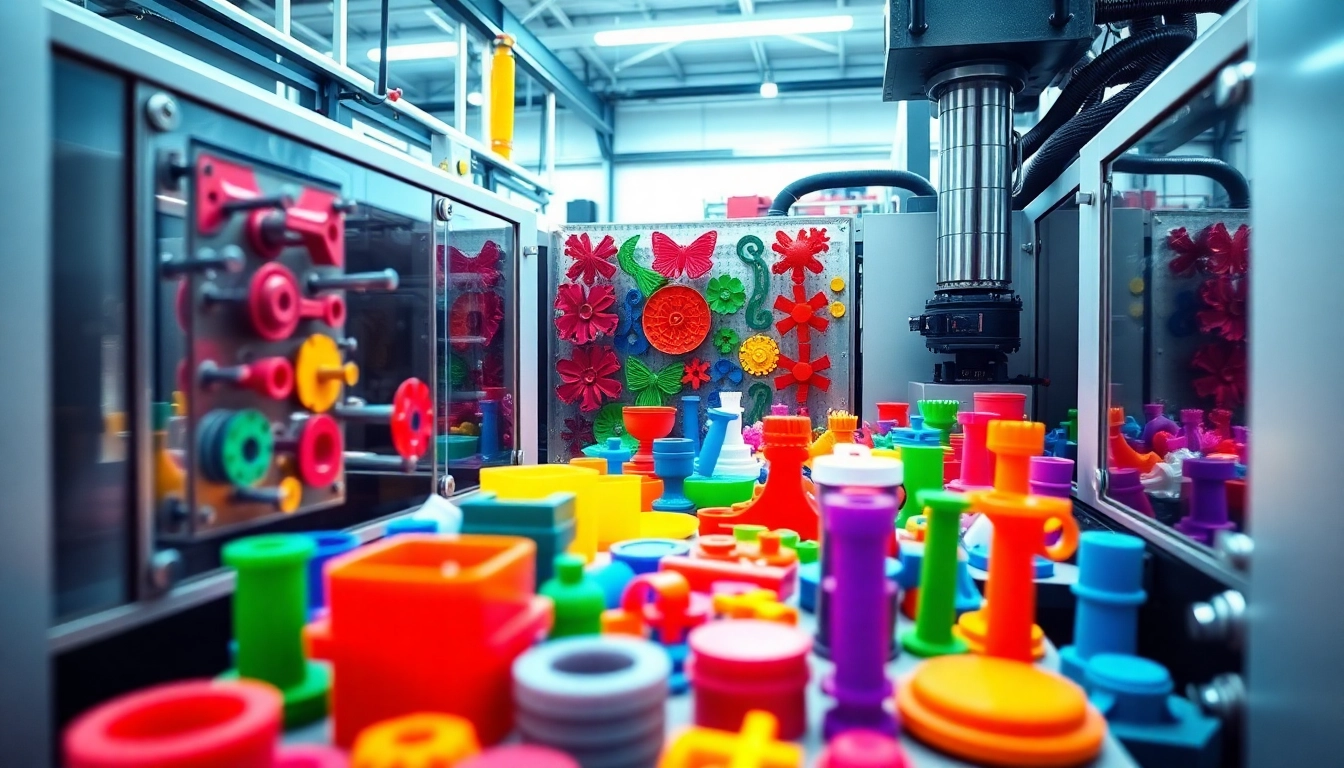Understanding the Manufacture of Plastic Parts
The manufacture of plastic parts encompasses a wide range of techniques, materials, and technologies that are paramount in numerous industries, including automotive, consumer goods, and healthcare. This article provides an extensive exploration of the plastic manufacturing process, focusing on terminologies, material selection, techniques, quality control, innovations, and future trends.
Key Terminologies in Plastic Manufacturing
Understanding key terms is crucial when discussing the manufacture of plastic parts. Below are some foundational concepts:
- Polymer: A large molecule composed of repeating structural units (monomers), which can be naturally occurring (like rubber) or synthetic (like PVC).
- Injection Molding: A manufacturing process where molten plastic is injected into a mold to form a specific shape and then cooled to solidify.
- Extrusion: A continuous process in which plastic is melted and forced through a die to create long shapes like pipes and sheets.
- CNC Machining: A subtractive manufacturing process that uses computerized controls to cut and shape materials from solid blocks.
- 3D Printing: An additive manufacturing process that fabricates parts layer by layer based on digital models.
Importance of Material Selection
The selection of materials is critical in the manufacture of plastic parts, as it directly affects the mechanical properties, durability, and usability of the final product. Common materials include:
- PVC (Polyvinyl Chloride): Known for its versatility and is widely used in construction, healthcare, and automotive parts.
- ABS (Acrylonitrile Butadiene Styrene): Offers high impact-resistance and is commonly used for consumer products.
- Polyethylene: Used for its chemical resistance and low-density applications such as packaging.
- Polycarbonate: Notable for its high strength and transparency, making it suitable for applications like eyewear and safety equipment.
Overview of Manufacturing Processes
Plastic manufacturing involves several processes, each suited to different applications and production goals. Below are the significant manufacturing methods:
- Injection Molding: Ideal for mass production of complex shapes.
- Extrusion: Perfect for producing continuous shapes.
- Blow Molding: Commonly used for hollow plastic parts like bottles.
- Thermoforming: Involves heating plastic sheets and forming them over molds to create packaging and containers.
- Compression Molding: Suitable for making large, simple parts.
Common Techniques in Plastic Part Manufacturing
Injection Molding Explained
Injection molding is perhaps the most widely utilized plastic manufacturing technique. The process involves several stages:
- Heating: Pellets of plastic are heated until they melt.
- Injection: The molten plastic is injected into the pre-shaped mold under high pressure.
- Cooling: The plastic is allowed to cool and solidify inside the mold.
- Demolding: Once cooled, the part is ejected from the mold, ready for finishing.
This method is highly efficient for producing high volumes of identical parts with high precision.
Extrusion Processes in Action
Plastic extrusion is a continuous process that allows for the production of long profiles such as pipes, sheets, and panels. Key steps include:
- Feeding: Plastic pellets are fed into a heated barrel where they are melted.
- Extrusion: The melted plastic is forced through a shaped die to form a continuous profile.
- Cooling: The extruded product is cooled, either in air or water, to maintain its shape.
- Cutting: The continuous profile is cut into specific lengths for distribution.
Choosing Between CNC Machining and 3D Printing
CNC machining and 3D printing are two vastly different manufacturing techniques suitable for different needs:
CNC Machining: Excellent for high precision and complex designs, CNC machining can work with a variety of materials. It is subtractive, meaning material is removed from a solid block to create the part.
3D Printing: An additive method that excels at producing prototypes and low-volume custom parts. It builds objects layer by layer from a computer-generated model, allowing for complex geometries that are difficult with traditional methods.
Quality Control in Plastic Manufacturing
Testing Methods for Plastic Parts
Quality control is critical in ensuring that plastic parts meet necessary standards before they reach the market. Common testing methods include:
- Visual Inspection: Checking for obvious defects such as surface blemishes or incorrect dimensions.
- Mechanical Testing: Evaluating tensile strength, impact resistance, and elasticity of materials.
- Thermal Testing: Assessing heat resistance and thermal expansion properties.
- Environmental Testing: Exposing parts to extreme conditions (temperature, humidity) to ensure performance under real-world applications.
Defect Identification and Mitigation
Achieving quality often involves identifying and correcting defects in the manufacturing process. Common defects may include:
- Warpage: Permanent distortion resulting from uneven cooling.
- Injection Marks: Visible marks left behind where the melted plastic entered the mold.
- Short Shots: When not enough material fills the mold cavity to produce a complete part.
To mitigate these issues, manufacturers can adjust mold temperatures, modify injection speeds, and optimize cooling cycles.
Implementing ISO Standards
Adhering to ISO (International Organization for Standardization) standards ensures that manufacturing processes remain consistent, efficient, and of high quality. Standards relevant to plastic manufacturing include:
- ISO 9001: Focuses on quality management systems and continuous improvement.
- ISO 14001: Addresses the environmental management of manufacturing processes.
- ISO/TS 16949: Automotive industry-specific standards for quality management.
Implementing these standards helps manufacturers enhance their product quality and increases customer satisfaction.
Innovations Impacting Plastic Part Manufacturing
Recent Technological Advancements
Innovation plays a significant role in redefining the manufacture of plastic parts. Recent advancements include:
- Advanced Materials: Development of biodegradable plastics and composite materials that enhance product sustainability.
- Smart Manufacturing: Integration of IoT (Internet of Things) technologies for real-time monitoring and analysis.
- Robotics: Utilization of automated systems to streamline production and minimize human error.
Sustainability Practices in Manufacturing
With rising environmental concerns, manufacturers are increasingly adopting sustainable practices such as:
- Recycling: Using recycled materials in production to reduce waste.
- Energy Efficiency: Implementing energy-saving technologies to reduce carbon footprints.
- Waste Management: Developing processes for minimizing and managing waste produced during manufacturing.
The Role of Automation in Production
Automation in plastic manufacturing enhances efficiency and precision in production processes. Benefits include:
- Reduced Labor Costs: Fewer human operators are needed for repetitive tasks.
- Increased Production Rates: Machines can operate faster and for longer periods without fatigue.
- Enhanced Accuracy: Automated systems provide high precision, minimizing human error.
Future Trends in the Manufacture of Plastic Parts
Emerging Materials and Technologies
The future of plastic part manufacturing will likely see a shift towards new materials and technologies. Promising developments include:
- Recyclable Composites: New composites designed for easy recycling to minimize environmental impact.
- Smart Plastics: Innovations such as self-repairing and shape-memory materials.
- Bioplastics: Growing use of bio-based plastics made from renewable resources.
Market Demand and Supply Dynamics
As industries evolve, the demand for plastic parts adapts accordingly. Factors influencing market dynamics include:
- Consumer Trends: Increasing demand for sustainable and environmentally friendly products.
- Technological Advancements: Rapid development in manufacturing technology allows for more diverse product offerings.
- Global Supply Chain Challenges: Disruptions can affect material availability and production capacity.
Global Industry Trends and Predictions
Looking ahead, the plastic manufacturing industry anticipates several key trends:
- Increased Automation: Continued integration of advanced robotics and AI to further streamline operations.
- Focus on Sustainability: Ongoing efforts to reduce waste and promote recyclable products.
- Growth of the Circular Economy: A shift towards a system that prioritizes resource reusability and sustainability.



